Audubon Society has recently announced in New York the names of the five photographers, among more than 2300, that wined the 6th edition of these awards. Melissa Groo was the grand prize winner.
Five judges have studied more than 9000 bird images, submitted by photographers of over 50 states in the United States. The criteria were technical quality, originality and artistic merit.
The grand prize winner as Melissa Groo, with the image of a Great Egret (Ardea alba) in Port Richey, Florida.
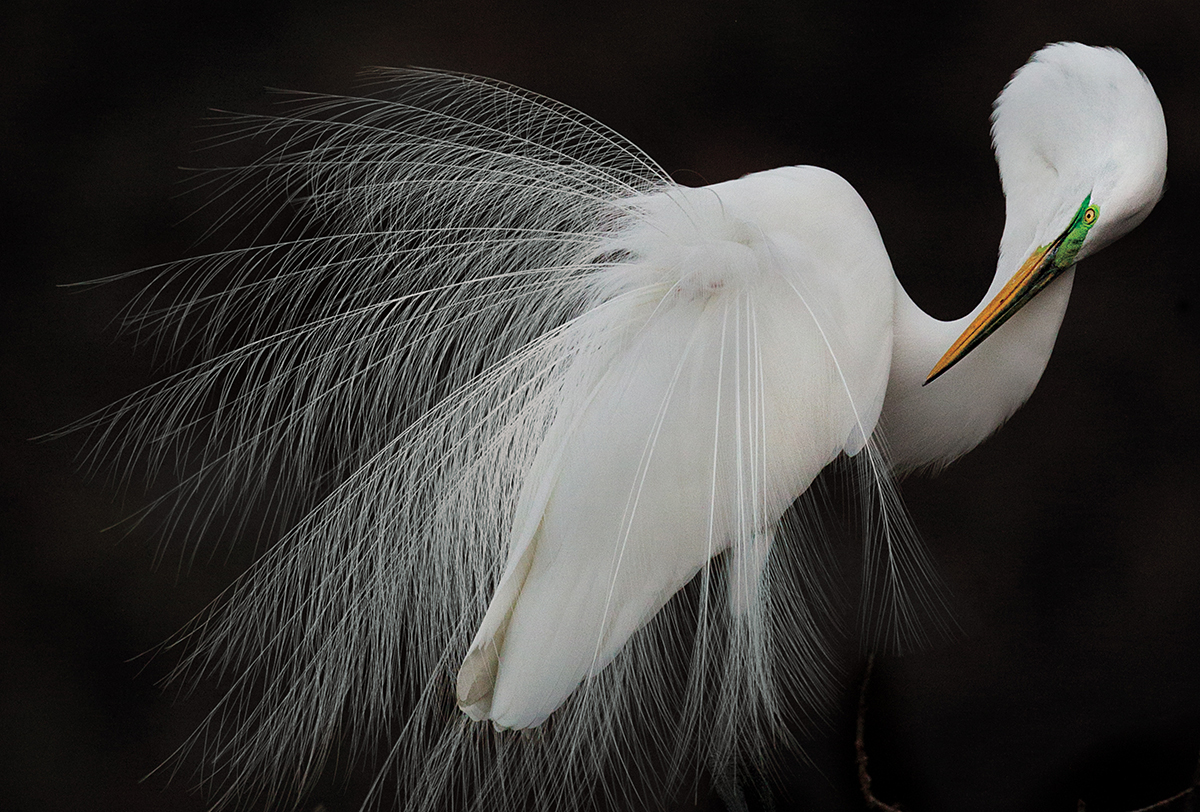
“I decided to do portraits of the birds that had landed (at that rookery)”, she said. “I noticed this Great Egret and his bright-green lores. He immediately began to fluff out his feathers, then went through the most beautiful series of displaying poses. Later I was struck by how much this portrait reminded me of an Audubon painting.”
In Professional category, the winner was Chris Gug, with the image of a Double-crested Cormorant (Phalacrocorax auritus), near La Paz, Baja California Sur, Mexico.
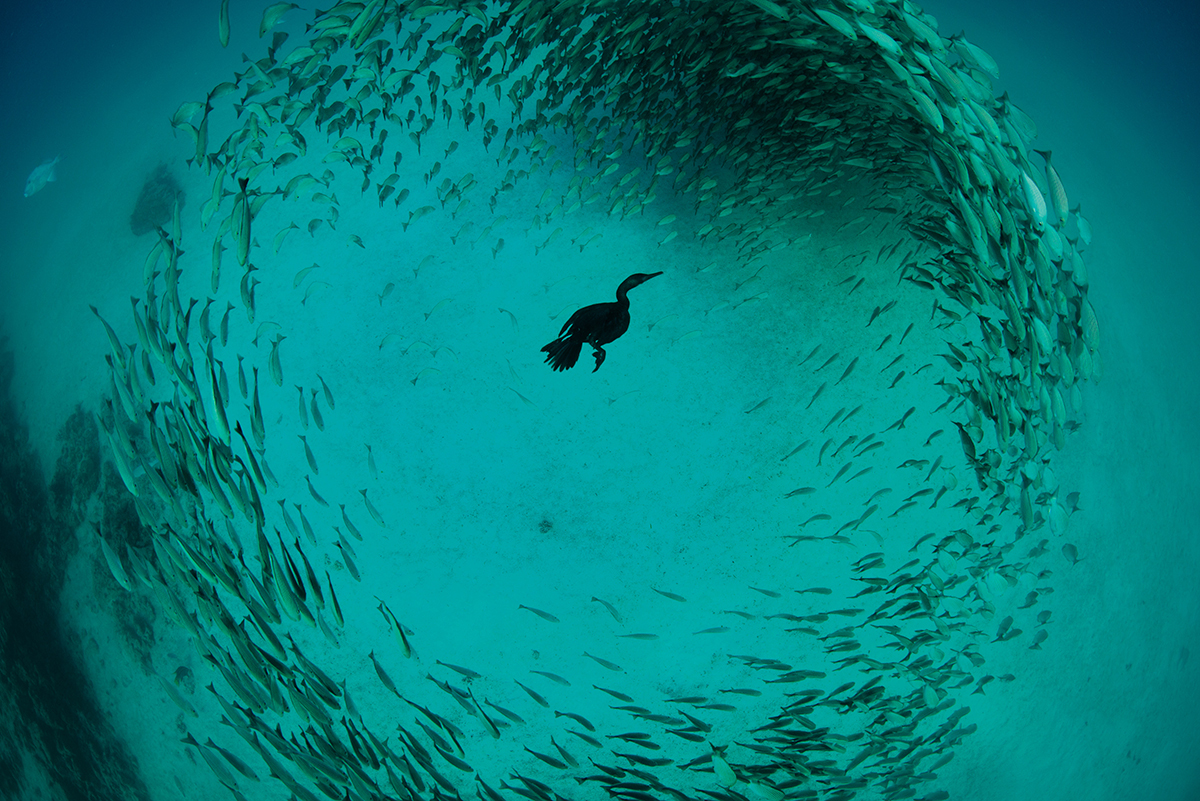
“Before my underwater shooting trip to La Paz, I had contacted every local dive shop and guide, asking if I would see birds diving on the Gulf of California’s famous schools of fish”, he told Audubon. “Everyone told me November was the wrong season. Disheartened, I wasn’t even looking for birds and just concentrating on the fish. So when the first cormorant dived right next to me, I was ecstatic! Over the next hour, four or five of them dived repeatedly to 40 feet deep until each bird had landed a catch. Then they were gone without a trace for the rest of my expedition.”
Jason Savage has won an Honorable Mention in that same category, with his picture of two Sandhill Cranes (Grus canadensis) on Lake Helena Wildlife Management Area, Montana.
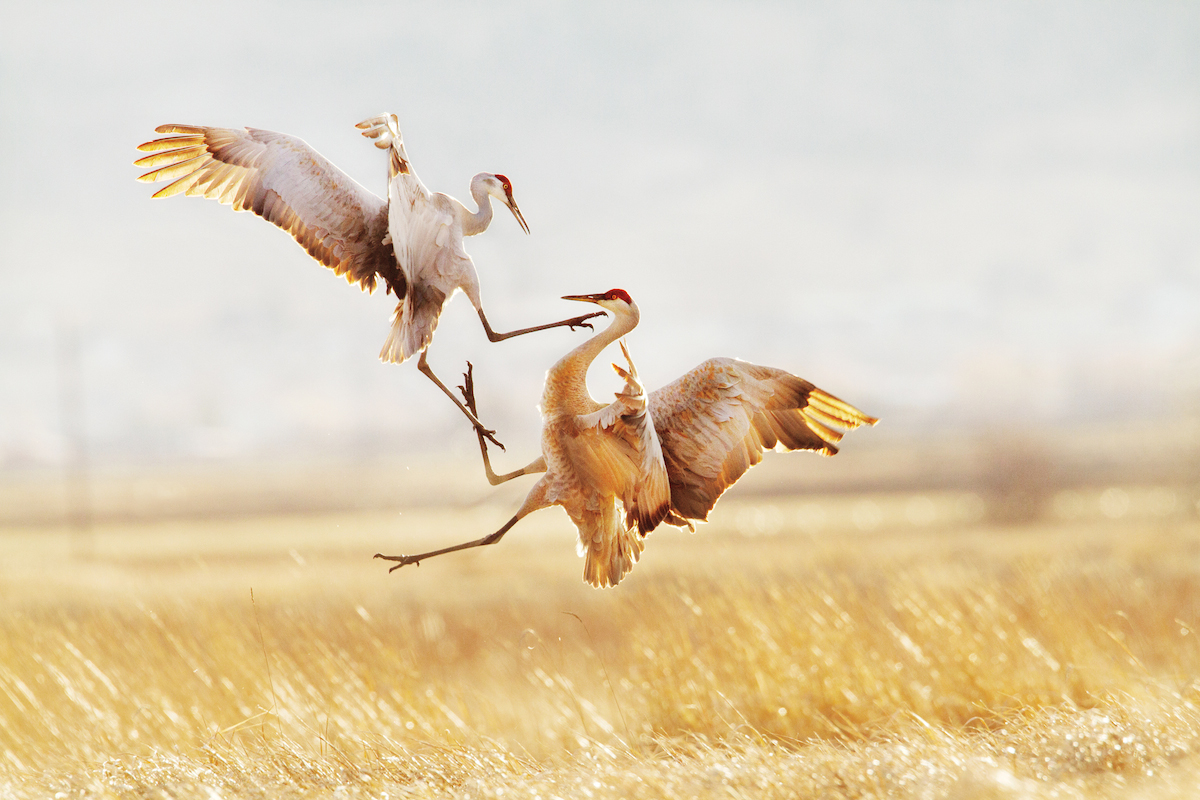
In another category, Fine Art, the big winner was Constance Mier, with a picture of Laughing Gull (Phalacrocorax auritus), Double-crested Cormorant (Leucophaeus atricilla) and Royal Tern (Thalasseus maximus), in Biscayne Bay Aquatic Preserve, near Miami.
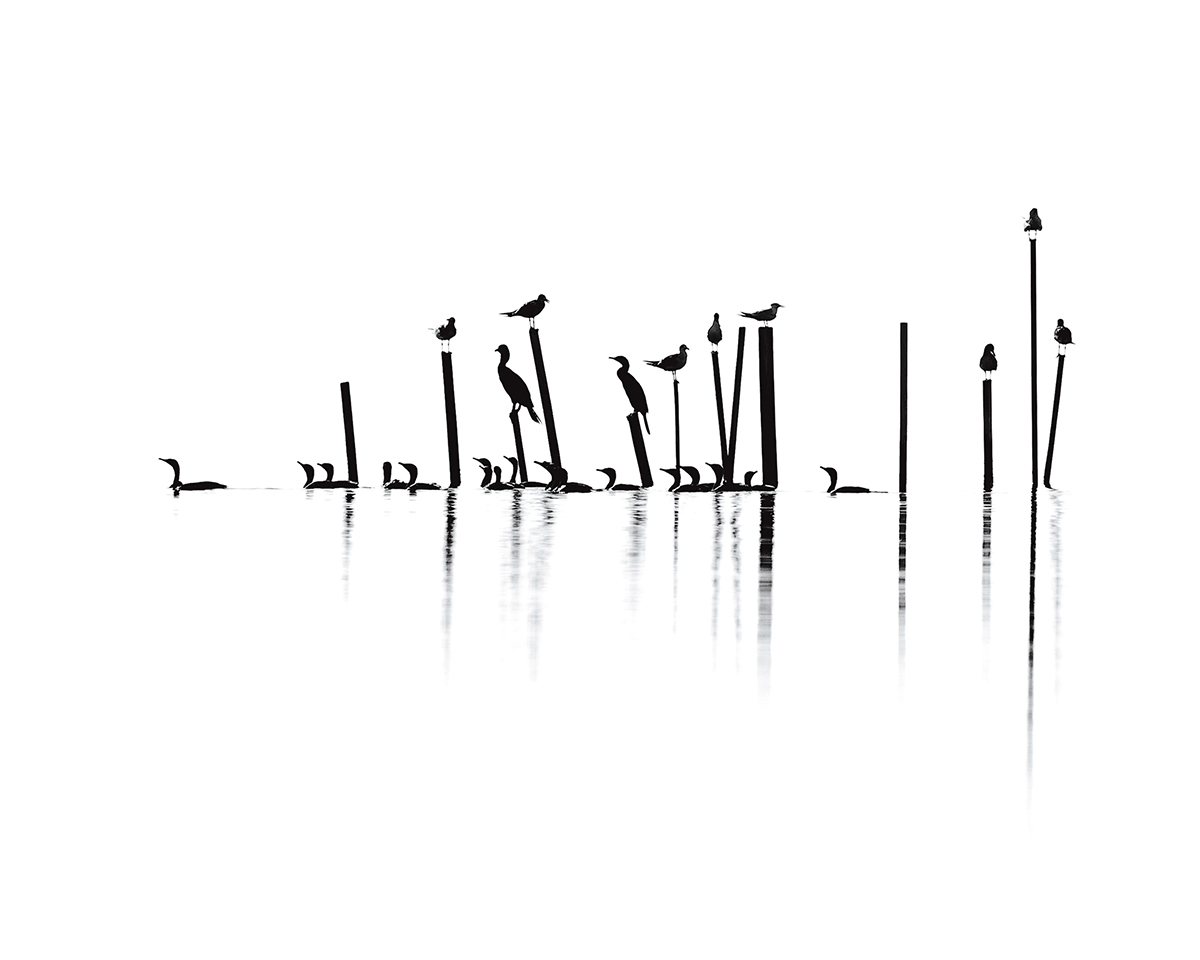
“One day on Biscayne Bay, having spent the morning photographing wading birds from my canoe, I turned toward the sun and saw this ‘high key’ image. It was so appealing, especially with the raft of cormorants forming a horizontal line, that I anchored my boat and captured the scene as the birds moved through the water. The sticks are now gone, so this image truly captured a moment in time for me.”
Donald Wuori has won the Amateur photographer category, with an image of a Prothonotary Warbler (Protonotaria citrea) nest at Audubon Sanctuary at Francis Beidler Forest, in Harleyville, South Carolina.
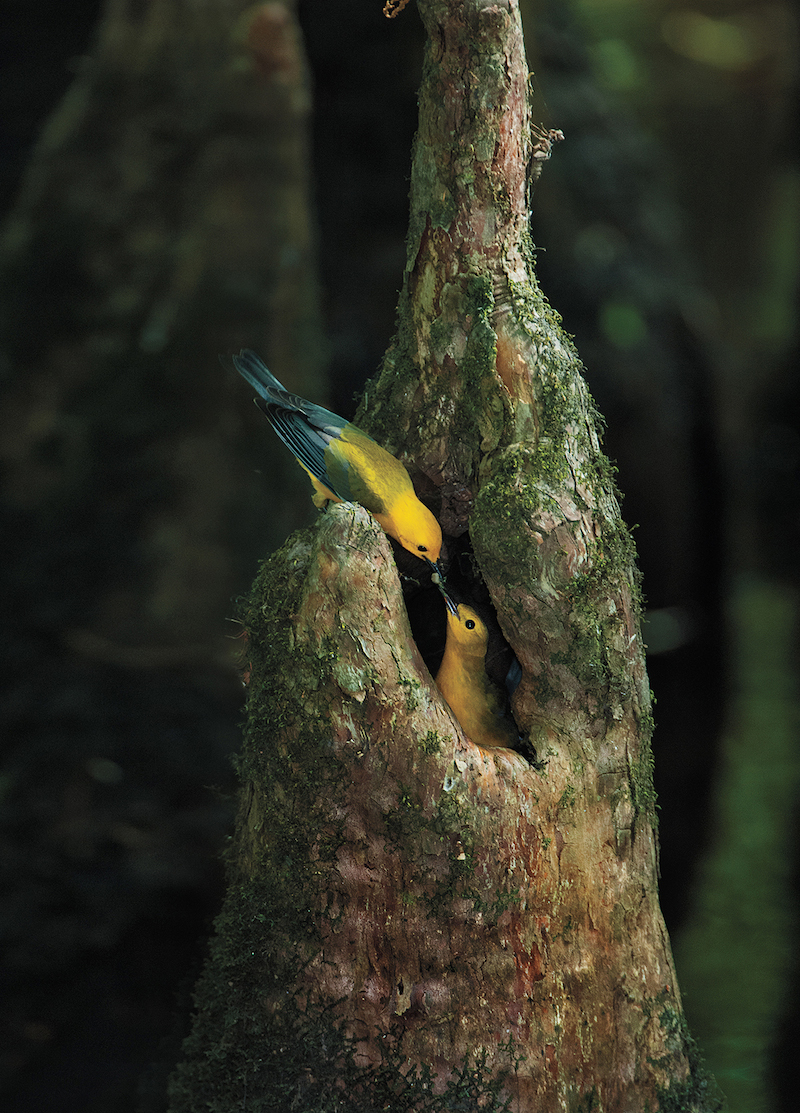
“I was standing on a boardwalk photographing a Prothonotary Warbler nesting site, located in a cypress knee, when a male came in and transferred what appeared to be an insect to the female—a beautiful moment in time!”
The judges gave two honorable mentions to Steve Russell, with an image of flamingos (Phoenicopterus ruber), and to Tim Timmis, with a photo of Black Skimmer (Rynchops niger).
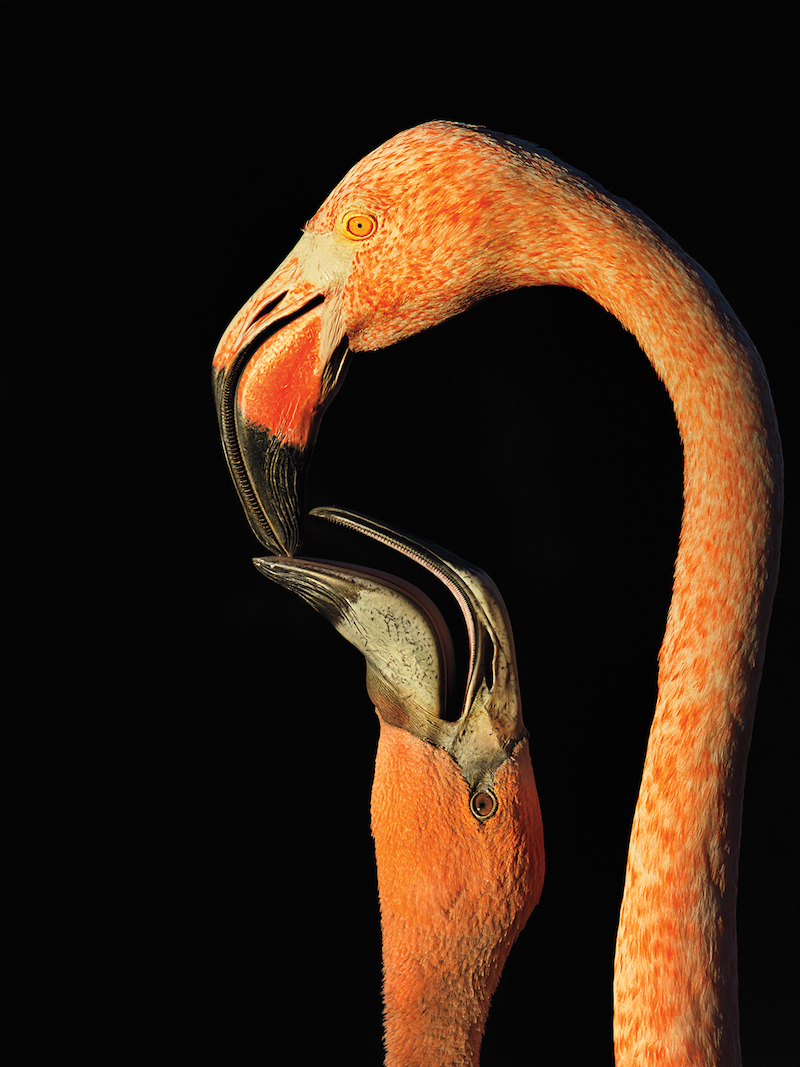
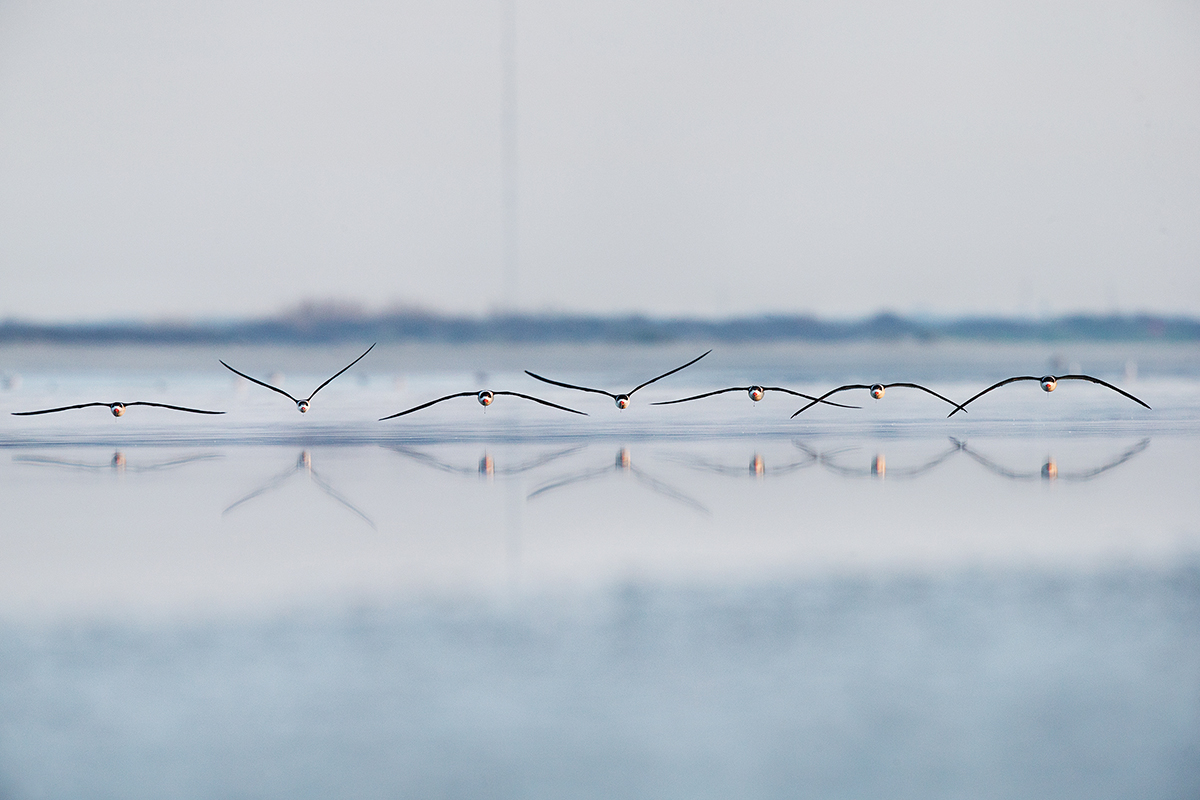
The winner in Youth category was Zachary Webster and his picture of a Painted Bunting (Passerina ciris), in Rancho Laguna Seca, Texas.
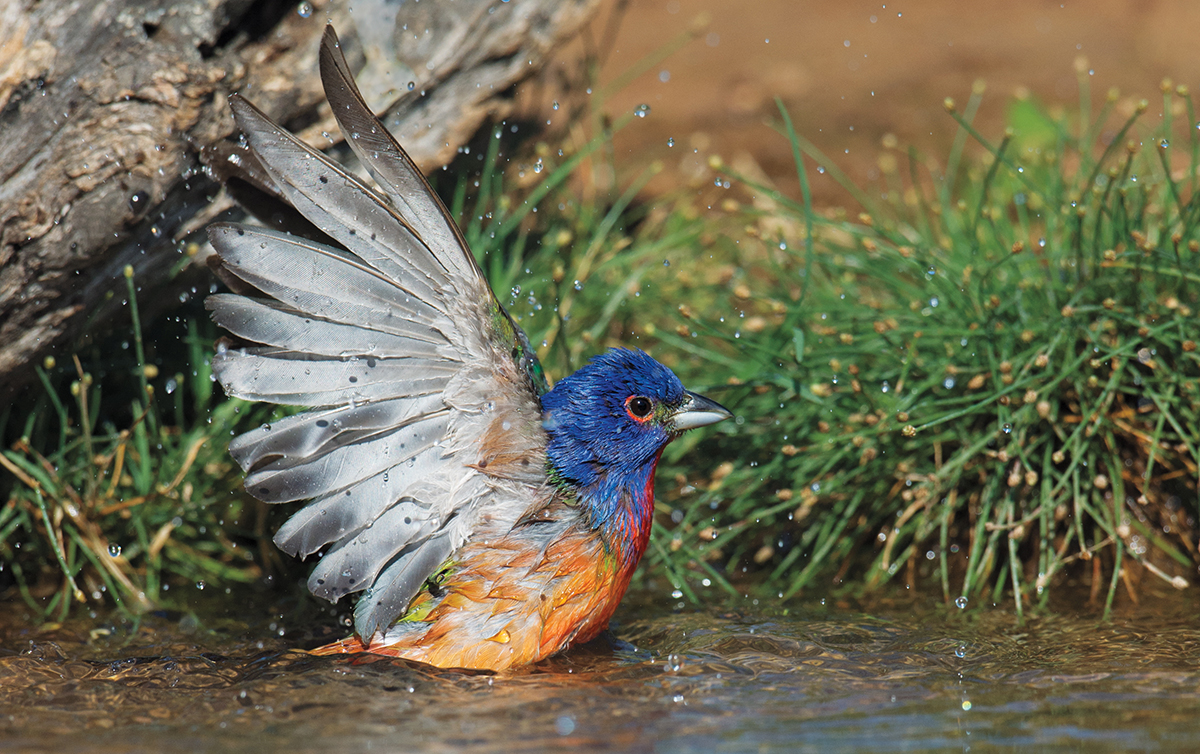
“I took thousands of shots of buntings over three days in late May, studying how they drop into the water and then rise. I didn’t want just a wet bird, or one with its face in the water, which would have been easy. I wanted to capture the head up, with eye shine. And I wanted to show the beauty of something few people get to see in freeze frame.”


